Changing plant names - a sign of advancing scientific knowledge
- theplantpress

- Jul 5, 2021
- 5 min read
Updated: Aug 18, 2021
Plant names seem to change all too regularly. But why? Taxonomists, the scientists responsible for most name changes, are often characterised as either 'lumpers' or 'splitters', suggesting we might just be changing names because we feel like it.
'Lumpers' are those with a tendency to take a broad view of taxonomic entities, accepting a wider range of variation in their concepts (often considered a conservative approach). 'Splitters' are those who tend to take a narrow view, accepting a more limited range of variation.
If changes are made without sound justification, then authors making these changes can rightly expect criticism from the wide range of people who use plant names in their day-to-day lives. However, for the most part, names are changed because our knowledge of the plants in question has advanced to the point we can no longer justify maintaining existing classifications.
Names are far more than a theoretical exercise in scientific classification - they are invaluable tools for understanding the diversity of life. Evolutionary biologist Prof. Stephen Hopper considers every plant name to represent a hypothesis on plant relationships, a hypothesis that is tested every time someone tries to identify a plant, making systematics, the field of scientific classification, one of the most rigorously tested of all scientific fields.
Sound classifications stand the test of time, and it is testament to the work of early botanists such as Robert Brown (1773–1858), that many of their names remain unchanged over 200 years later, or in this case, that only now are we learning enough to present a better classification. Traditional classifications have usually been based on morphological features, which present a limited amount of data from which to infer relationships.

These images show the standard features used to describe and classify a species first named Cladium undulatum in 1864.
For all the changes that seem to have been made, in Australia, less than 15% of plant names have changed in the last 50 years. Many of these changes have occurred in the last 20 years as DNA data have enabled us to resolve relationships that may have been in doubt for centuries. These recent changes give the impression of instability. However, we have already passed the point of greatest change, meaning we now know enough to be confident that the number of name changes still to come will continually decrease. Ultimately, we will achieve a stable classification for all Australian plants.
A major project is underway, coordinated by the Genomics for Australian Plants working group, to generate enormous amounts of DNA sequence data for every Australian plant species, which will provide a rigorous test of all existing classifications.
The biggest challenge soon will be to describe the thousands of new species that remain unnamed, or indeed still undiscovered, in the Australian Flora. Nearly 7000 new Australian plant species have been described in the last 50 years, and we may have that many again that are yet to be named.
I have just co-authored a new sedge genus, Anthelepis (Cyperaceae). The justification for recognising the new genus serves as a useful example of our improved understanding of sedge relationships.
The new genus contains just four species, one of them newly described in the same paper. The other three have been recognised for a long time, but their classification has been the subject of much debate and many changes.
The first species to be named was originally described as Chaetospora paludosa by Robert Brown in 1810. It is restricted to the east coast of Australia, in Queensland and New South Wales, where it grows in coastal swamps. It was first collected by Joseph Banks and Daniel Solander at Botany Bay in 1770, and a duplicate of this collection is held at the New South Wales National Herbarium. It has since been classified in the genera Costularia, Helothrix, Schoenus and Tricostularia.
The second species was named Cladium undulatum by George Henry Kendrick Thwaites (1812–1882), published in 1864 based on specimens collected by James Alexander Stewart-Mackenzie (1784–1843) in Sri Lanka in 1837–1840 (then Ceylon), but ranging widely from Sri Lanka to northern Australia. This species has subsequently been variously classified in the genera Carpha, Chaetospora, Lepidosperma, Machaerina, Mariscus, Schoenus and Tricostularia by later authors.
The third species was named Schoenus guillauminii, found only in New Caledonia, and described by Georg Kükenthal (1864–1955) based on specimens collected by Isidore Franc, (1879–1969). The name honours André Louis Joseph Edmond Armand Guillaumin (1885–1974), who made many invaluable plant collections in New Caledonia. It has also been classified in Tricostularia.
The fourth species, Anthelepis clarksonii, described as new in this paper, is found only in North Queensland, on Cape York Peninsula. It is named for local botanist John Clarkson (1950–), who has recently celebrated an amazing 50 years in the same job, greatly advancing our knowledge of North Queensland plants. John has been the most prolific collector of this previously undescribed sedge. He collected the type specimen in 1980, and it has been sitting in herbaria for nearly four decades, awaiting description. It has not been named earlier as we needed to be sure it was not a species already known and named from Asia. Anthelepis clarksonii was clearly related to 'Tricostularia' undulata, a species with several synonyms, and we did not wish to create a superfluous name.
For so few species, these taxa have seen a remarkable number of name changes. But why? Previous classifications have all been based solely on the interpretation of morphological characteristics to infer their closest relatives. Each author has usually focused on just one or a few characters when defining genera in this tribe, but they commonly differed in opinion as to which was most significant, hence the many opinions on the best classification for each species.
In reality, this group shares many individual characteristics with a number of genera, leading to past confusion, but it does have a unique combination of characters. So, we can recognise the genus on morphological features, but we needed external evidence to determine that this set of features was sufficiently significant to justify the naming of a new genus.
Because many sedges look similar, or share particular features, we turned to DNA evidence to answer the question of what these species' relationships with other genera really are. After building a detailed data set for Australian sedges in the tribe, and including possibly allied groups from overseas, our analyses showed that they did indeed for a unique group. They are sufficiently different that we remain uncertain as to which of the other genera in the tribe they are most closely related to, a question that will require a lot more DNA data to resolve.
Having established that these species from a unique group, and that no earlier names apply to it, the best classification was the recognition of a new genus.
Description of the new genus Anthelepis enables us to redefine our ideas of biogeographic histories, unique evolutionary lineages, and conservation priorities. With a distribution centred in Australia, this new genus increases the uniqueness recognised in the evolutionary history of Australian plants.
The new name comes from a combination and partial contraction of the Greek words anthēlē, the plume of a reed, and lepis, a scale, in reference to the hypogynous bristles at the base of the nutlet (fruit).
While it may take time for people to learn the new names, ultimately, the change represents the resolution of scientific debates that have remained unresolved for over 200 years.
The scientific paper has been published in the journal Australian Systematic Botany.
A description of the genus and the sole species found in New South Wales can be already be found in PlantNet, the digital Flora of New South Wales and a treatment has been submitted for the online Flora of Australia.
The Australian names and their synonyms can be found in the Australian Plant Names Index.
Reference
Barrett RL, Wilson KL, Bruhl JJ (2019) Anthelepis, a new genus for four mainly tropical species of Cyperaceae from Australia, New Caledonia and South East Asia. Australian Systematic Botany 32: 269–289. https://doi.org/10.1071/SB18047


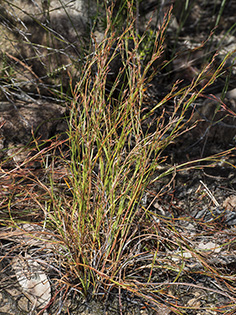

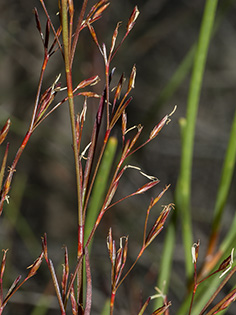

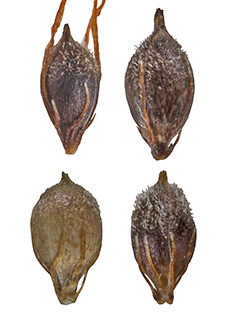

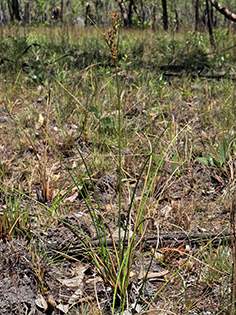

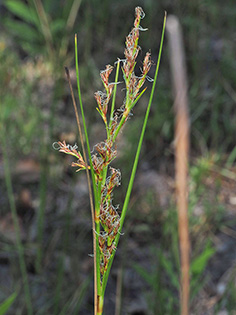

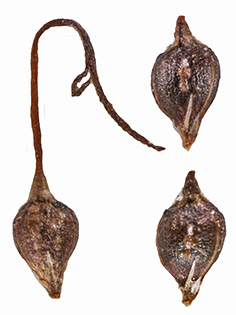
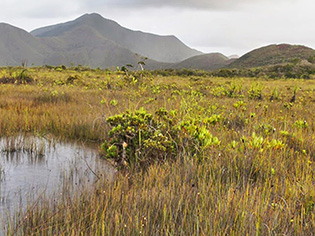

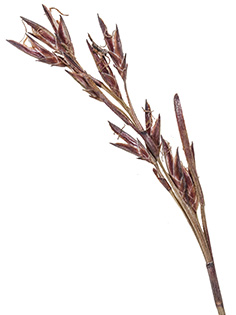

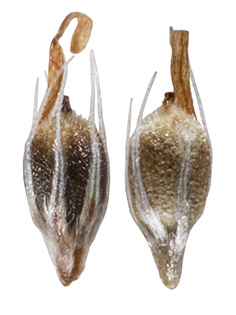








Comments